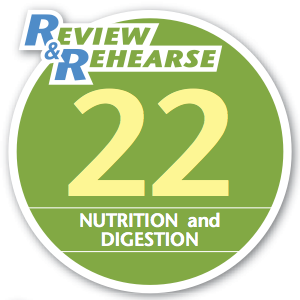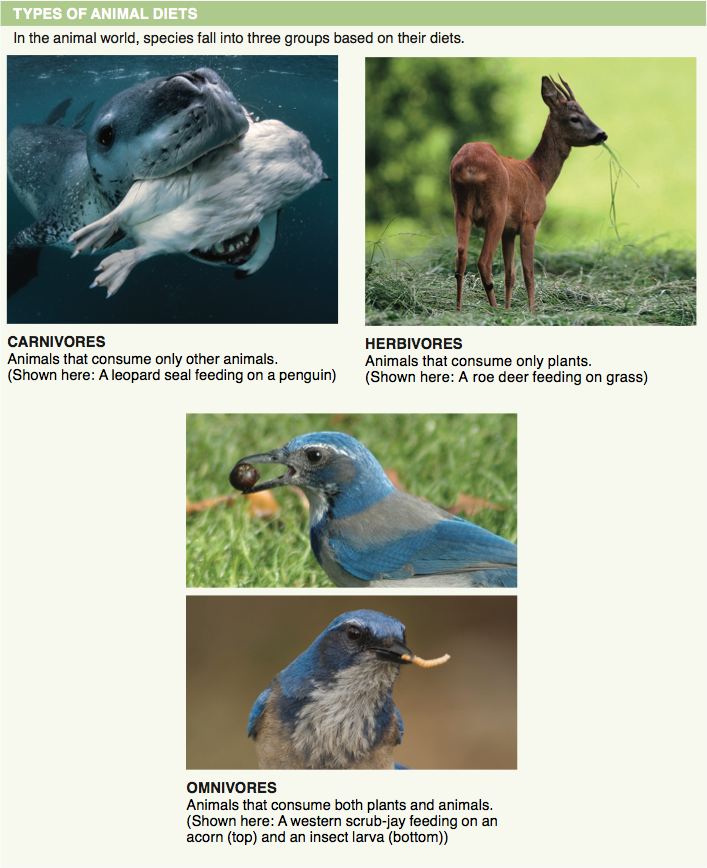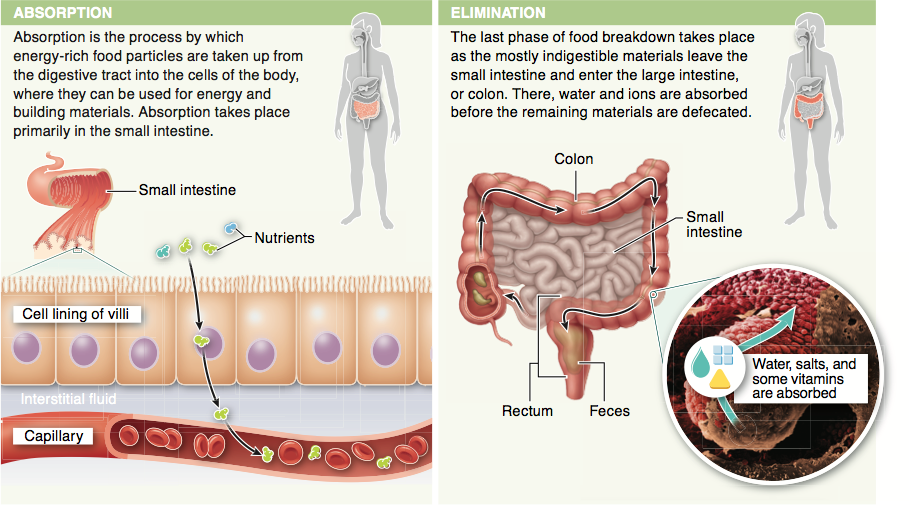
Chapter 22. Chapter 22: Nutrition and Digestion
Review & Rehearse

Instructions
Review the visual summaries and answer the essay questions below.
Make sure to enter a brief response that completely answers each question and explains your reasoning. When you click "Submit," you will be provided instant feedback, allowing you to check if your response is correct.
(This activity contains 16 total essay questions. Each new question will be revealed once you complete the preceding question.)
1.


1. What are the six groups of nutrients? What is their primary role in human health?
2.

2. Why must herbivores spend a large portion of each day eating?
3.

3. What is basal metabolic rate?
4.


4. Why can it be dangerous to consume too much water?
5.

5. What is meant by a “complete” protein?
6.
6. Animals, including humans, require 20 different amino acids to make proteins. How many of these can be made in the body? Where do the others come from?
7.


7. Why does over-consumption of fat-soluble vitamins pose a greater health risk than over-consumption of water-soluble vitamins?
8.


8. What are the four distinct phases used by humans to extract nutrients from food? During each phase, what significant activity contributes to nutrient harvesting and absorption?
9.
9. Describe the process whereby about 20% of ingested starch is broken down in the mouth.
10.
10. Besides helping to chemically break down food in your stomach, what other function do stomach acids serve?
11.

11. Which structural feature of the small intestine is crucial in helping the body get nutrients from food into the bloodstream?
12.
12. Too much dietary fiber can lead to diarrhea. Why?
13.
13. Describe how some mammals, which do not produce enzymes to break down cellulose, are able to extract nutrients from cellulose-containing food.
14.



14. Which characteristic of human evolutionary history probably led to the evolution of strong appetites?
15.

15. Describe the role of insulin in human digestion and absorption.
16.

16. How does adding spices to food help reduce the risk of infection from pathogenic microbes?
Activity results are being submitted...